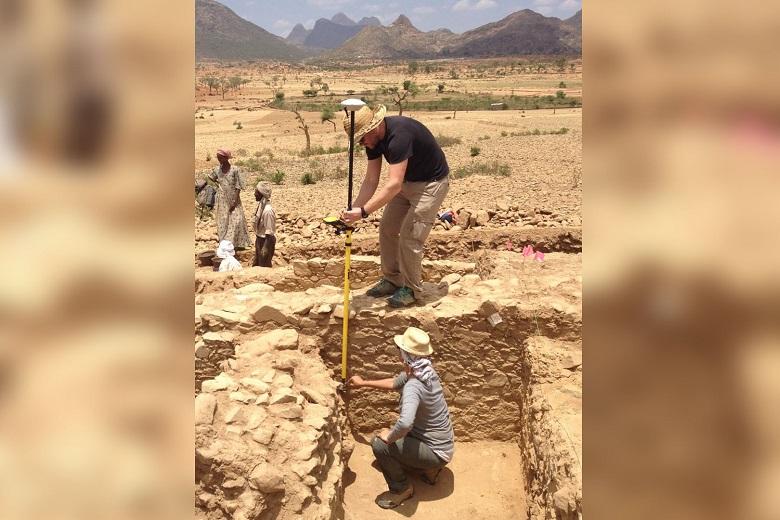Some people believe that they know everything about Christianity and its spread, but they don’t know that one of the oldest Christian churches of the Aksumites was discovered in Ethiopia.
Ethiopian Christians claim that their church is one of the oldest. The Christian faith in this area, as they believe, was brought by the first companions of the faith in ancient apostolic times. A recent archaeological find in northern Ethiopia may surprise some Christians and people who have nothing to do with Christianity.
The area where archaeologists have unearthed the ruins of an ancient Christian church was once part of the mighty Aksumite Empire. During its heyday, this empire covered the territories of modern Ethiopia, Eritrea, Djibouti, Somalia and part of the Arabian Peninsula, the researchers note.
Historians managed to unearth the remains of an important site of the Aksumite Empire: a large commercial and religious centre. This ancient city was located north of the Sahara. Between the capital of the empire – Aksum, on the one hand, and the Red Sea, which the then inhabitants of this land called Yeha, on the other hand. The remains of a settlement unearthed during excavations may help reveal some of the mysteries surrounding the rise and fall of this oldest African empire.
Archaeologist Michael Harrower of Johns Hopkins University says that the Axum Empire was a very influential and powerful civilization in the ancient world. He also adds that it is a pity that the Western world is completely unaware of this. But, apart from Egypt and Sudan, which everyone knows about, the Aksumites are the earliest civilization with a complex structure on the African continent.
On the territory of Beta Samati, researchers found a whole group of commercial buildings, many residential buildings. The most important discovery was the discovery of one of the oldest Christian temples in Africa. Archaeologists attributed this structure to the 4th century AD. It is believed that it was built sometime after Christianity was adopted in Aksum. On the temple’s territory, archaeologists have found a well-preserved pendant, coins, figurines and vessels for transporting wine.
The most exciting find was a black stone pendant with an inscription in the shape of a cross. The descriptions on the pendant are made with the letters of the Ethiopian alphabet. This alphabet is still used in the region. Harrower also said the pendant was the size to hang around the neck and was likely worn by a local priest. The archaeological team also found a ring.
The ring is forged from copper. It was covered with gold leaf on top. The jeweller who made the ring adorned it with carnelian – a gemstone of red colour. The stone is engraved in the form of a bull’s head with a wreath or a vine above its head.
The researchers determined the construction of the discovered Christian temple as the same period when Christianity was first legalized by the Roman emperor Constantine. Rome was about 3000 miles from Axum.
The Axumite Empire connected Rome and Byzantium. It was an extensive network of trade routes. Despite all this, little is known about the Aksumites.
There is a version that the king of Ezana converted the empire to Christianity in the middle of the fourth century, and soon after, this church was built. The building is quite large, very similar in style to the ancient Roman basilicas.
Researchers found many artefacts of both secular and religious nature inside the structure, including crosses, animal figurines, seals and tokens, which were most likely used for trade. Overall, the items they found suggested a mix of Christian and pre-Christian beliefs, as would be expected at the beginning of the spread of the faith.
The Aksum Empire was mighty and influential until the 8-9 centuries when its decline began. Islam came to the region. Muslims seized control of trade in the Red Sea. And the once-mighty empire disappeared over time.
It is fascinating that despite the spread of Islam, the Christian faith remained solid and predominant in this region. Even when in the 16th century, the area was captured by Muslims from Somalia and the Ottoman Empire. Despite this, the inhabitants of the region have preserved the Christian faith. Even now, almost half of the country consider themselves members of the Ethiopian Orthodox Church.
There are many other ancient Christian churches in Ethiopia. Many of them were built during the Middle Ages – not as venerable as archaeologists have discovered today. Their construction is very curious. They are built underground! The depth of the square pits where these temples were built reaches 50 meters. This is the height of two nine-story buildings!
These buildings have a roof and cross-shaped windows. Everything was built of stone. These churches are significantly younger than the ones found at Beta Sameti. There are several theories about who might have made these churches. Some say that the temples were built by the order of King Lalibela. He visited Jerusalem, was very upset that the temple in the holy land was destroyed, and the king decided to build his “new Jerusalem”. Other historians claim that the Templars built the temples. And there is a fantastic version that angels in one night erected the churches.
There is not much concrete evidence to support any of the theories, but one thing is clear: Ethiopia’s claim that it is the oldest “official” Christian country in the world has very concrete grounding.
